Introduction to Sunset Wildlife Adventures at Moraine & Lake Louise
The golden hour at Moraine Lake and Lake Louise offers an extraordinary opportunity for those passionate about wildlife and natural beauty. As the sun dips behind rugged peaks, the valleys and forests come alive with movement and sound. The cooling air, shifting light, and tranquil atmosphere create an ideal backdrop for observing animals in their natural habitat. These moments, filled with anticipation and awe, are cherished by both seasoned adventurers and first-time visitors alike.
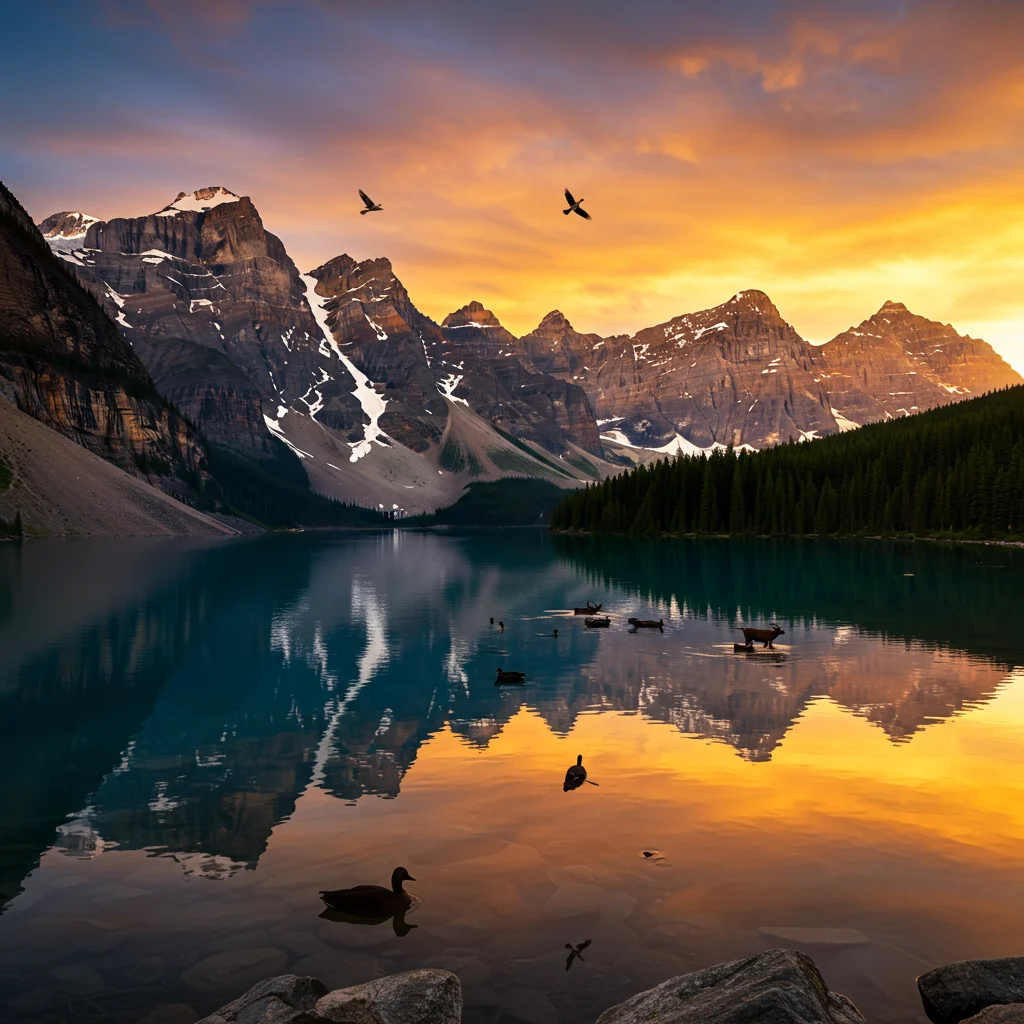
Planning a sunset wildlife outing in these iconic Canadian Rockies destinations requires knowledge, preparation, and respect for the environment. In this comprehensive guide, we share expert tips and essential advice to help you make the most of your experience at Moraine and Lake Louise.
Why Choose Sunset for Wildlife Viewing?
Sunset is widely regarded as one of the best times to observe wildlife at Moraine and Lake Louise. The transition from day to night brings cooler temperatures, encouraging animals to emerge from shaded areas and forage for food. The soft, golden light not only enhances the landscape but also improves visibility for spotting elusive creatures.
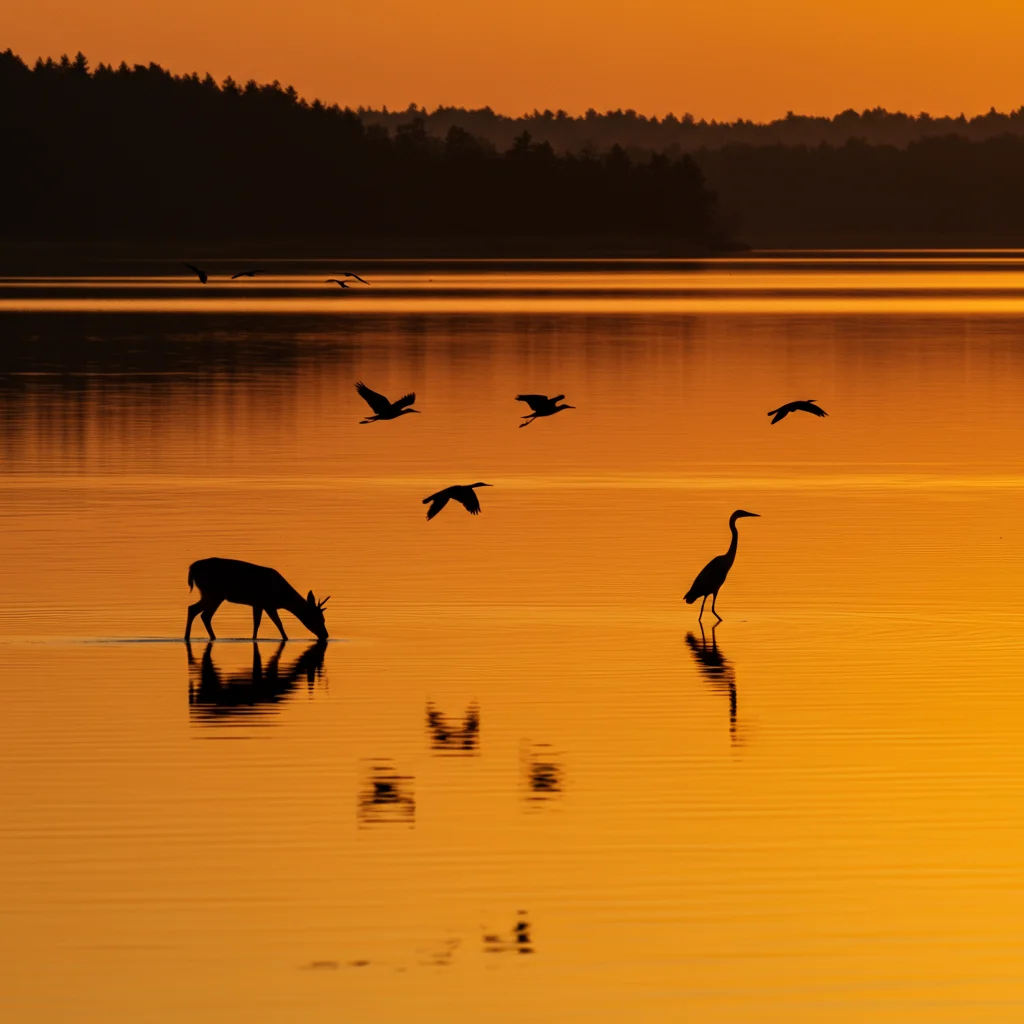
Many species are more active during dusk, increasing your chances of witnessing unique behaviors. The serenity of the evening also means fewer crowds, allowing for a more intimate connection with nature. For those seeking inspiration for other sunset adventures, our exploration of Sedona’s Red Rocks at sunset highlights similar magic in a very different landscape.
What Makes Moraine & Lake Louise Unique for Wildlife?
Moraine Lake and Lake Louise are located in the heart of Banff National Park, an area renowned for its ecological diversity and pristine habitats. The combination of dense forests, alpine meadows, and glacial lakes supports a remarkable variety of mammals, birds, and aquatic species.
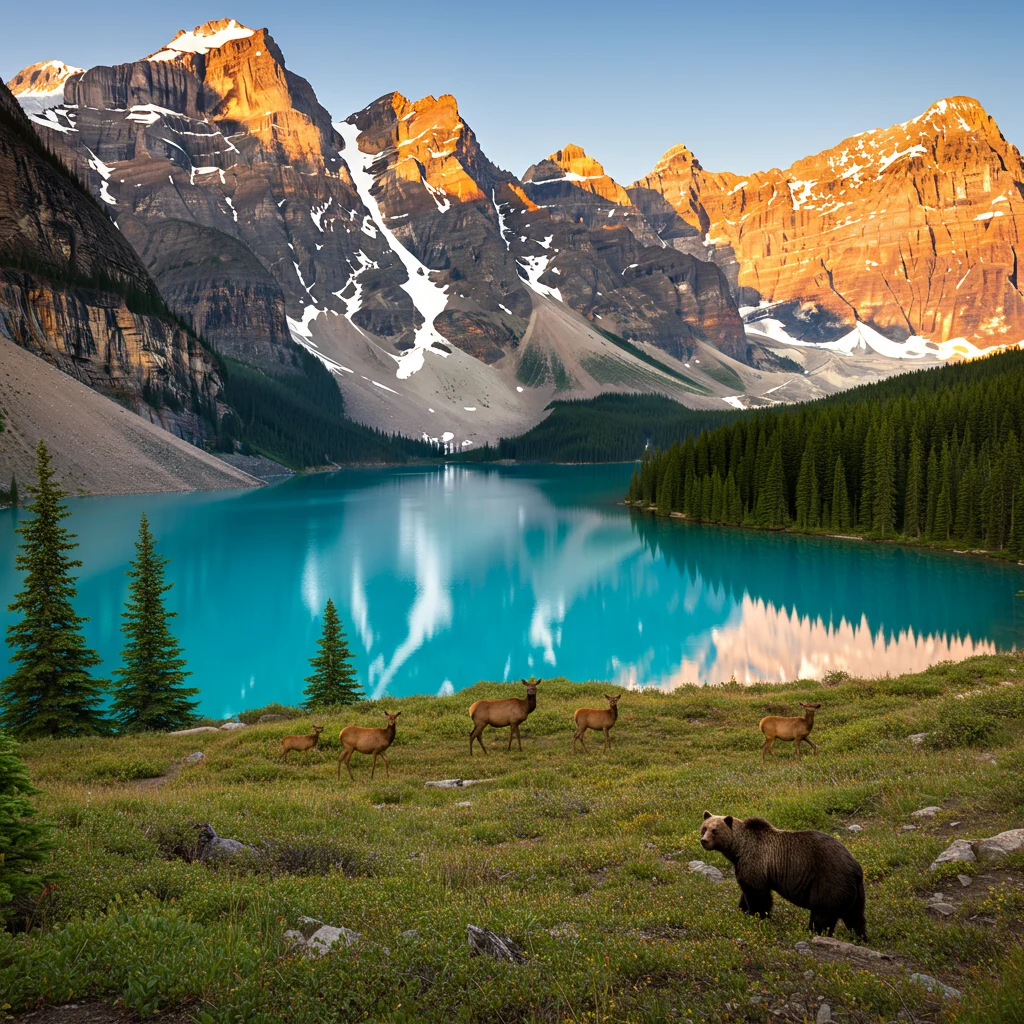
These locations are also situated along important wildlife corridors, making them prime spots for observing animals on the move. The dramatic mountain scenery adds to the sense of wonder, creating a setting where every sighting feels special and memorable.
Best Times of Year for Sunset Wildlife Watching
The timing of your visit can greatly influence the wildlife you encounter and the overall quality of your sunset experience. Each season brings its own rhythms and highlights, shaping the behavior and visibility of local species.
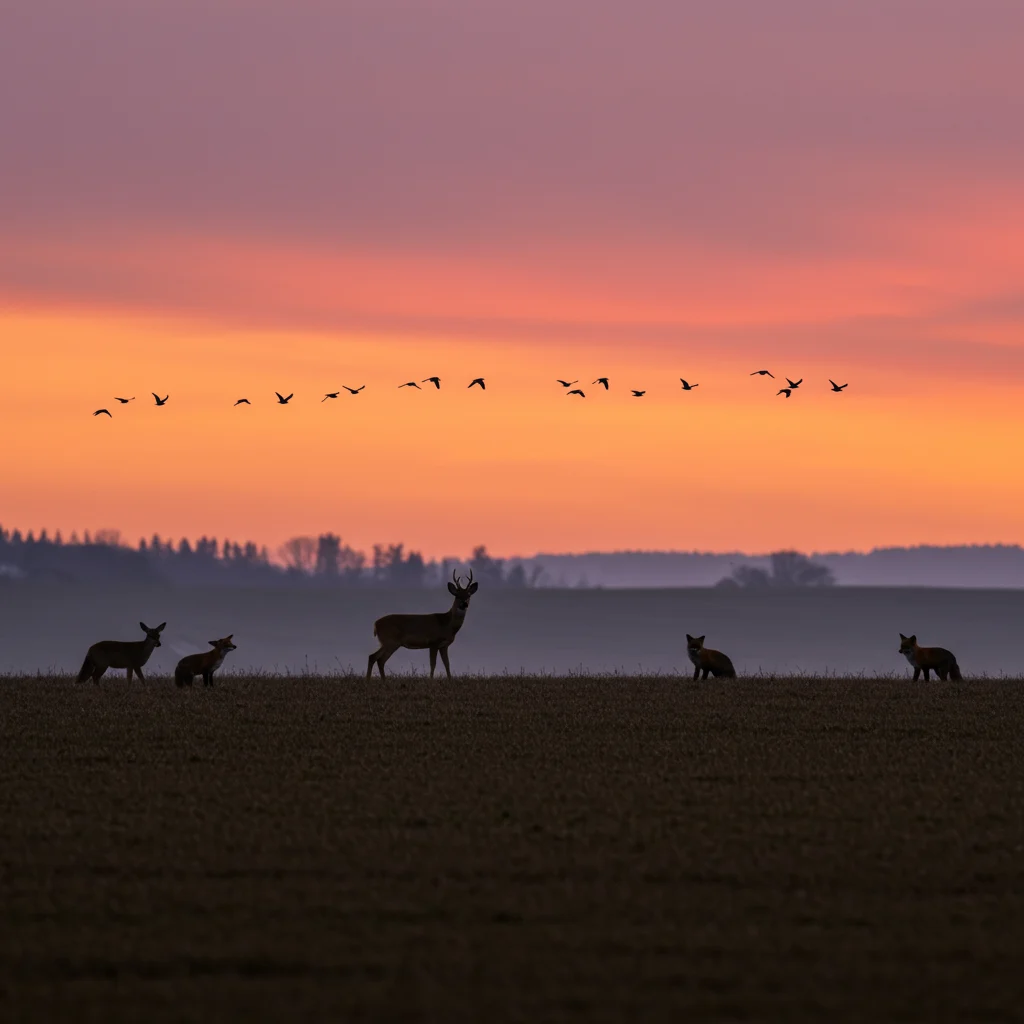
Seasonal Wildlife Activity: What to Expect
Understanding seasonal changes helps us anticipate which animals are most likely to be active and visible during sunset hours.
Spring Wildlife Behaviour
As snow melts and vegetation returns, spring brings a burst of energy to Moraine and Lake Louise. Bears emerge from hibernation, often accompanied by cubs, while elk and deer graze on fresh shoots. Birdsong fills the air as migratory species return, creating a lively and hopeful atmosphere.
Summer Wildlife Behaviour
Summer evenings are characterized by long, lingering sunsets and abundant wildlife activity. Moose, deer, and mountain goats frequent the lakeshores, while beavers and otters become more active in the water. Insects buzz, and the scent of pine intensifies as the sun fades.
Fall Wildlife Behaviour
Autumn transforms the landscape with vibrant foliage and crisp air. Elk and moose enter the rutting season, and their calls echo across valleys at dusk. Bears prepare for winter, foraging energetically, while migratory birds gather for their journeys south.
Winter Wildlife Activity
Winter sunsets are quiet and serene, with fewer species visible but unique opportunities for tracking animal movements in the snow. Coyotes and foxes hunt in open fields, while hardy birds such as owls and grosbeaks add life to the frosty scene.
Planning Your Sunset Wildlife Adventure
Thoughtful planning enhances both safety and enjoyment during your sunset wildlife outing. By considering timing, weather, and logistics, we can maximize our chances of memorable sightings.
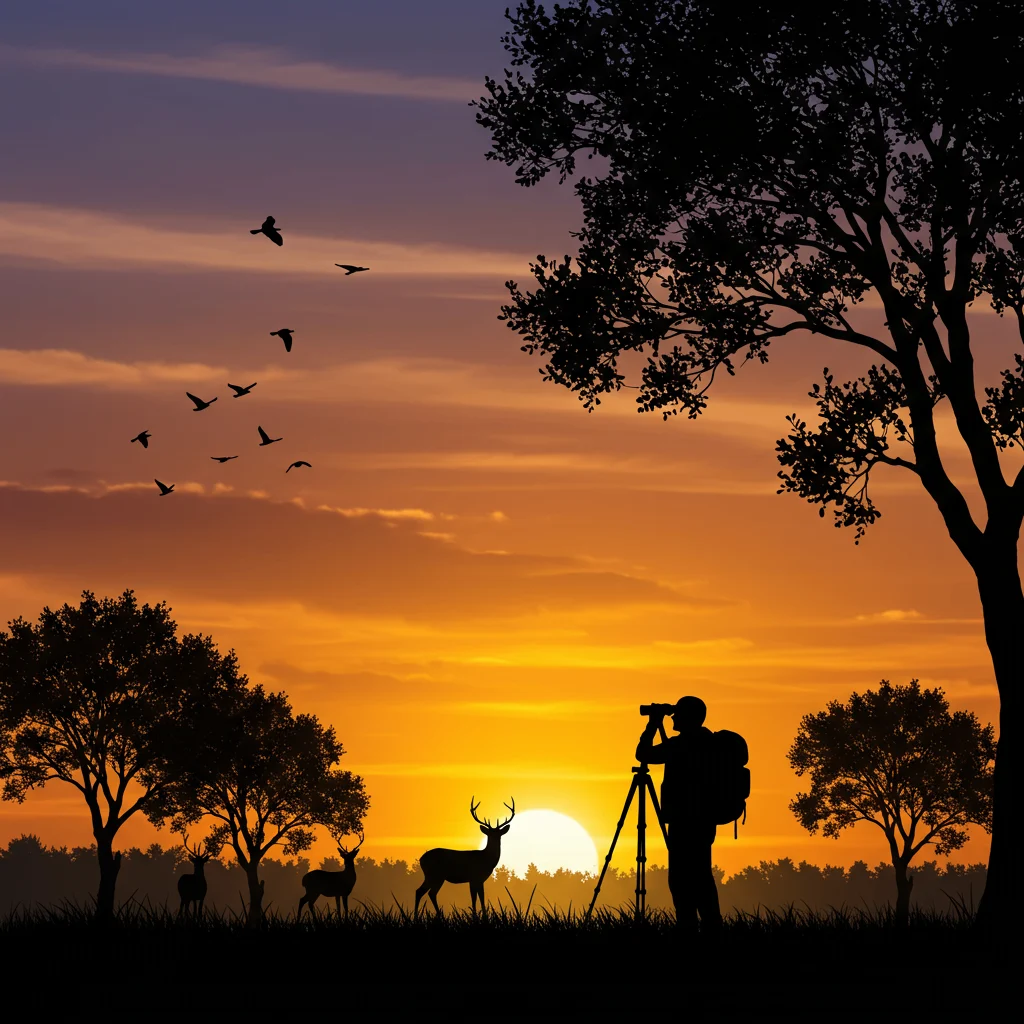
How to Choose the Right Day for Sunset Viewing
Checking sunset times and researching recent wildlife activity reports are crucial first steps. Aim for days with clear skies or light cloud cover, as dramatic lighting enhances both viewing and photography.
Weather Considerations and Forecasting
Weather in the Rockies is notoriously changeable. Sudden storms, wind shifts, or temperature drops can occur with little warning, especially in the evening hours.
How to Prepare for Changing Conditions
Dress in layers and bring waterproof gear, even if the forecast looks favorable. Always carry extra food, water, and a fully charged phone for emergencies. Being prepared for unexpected weather allows us to focus on the experience rather than discomfort.
Essential Gear for Sunset Wildlife Watching
Having the right equipment makes a significant difference in comfort, safety, and the quality of your wildlife observations.
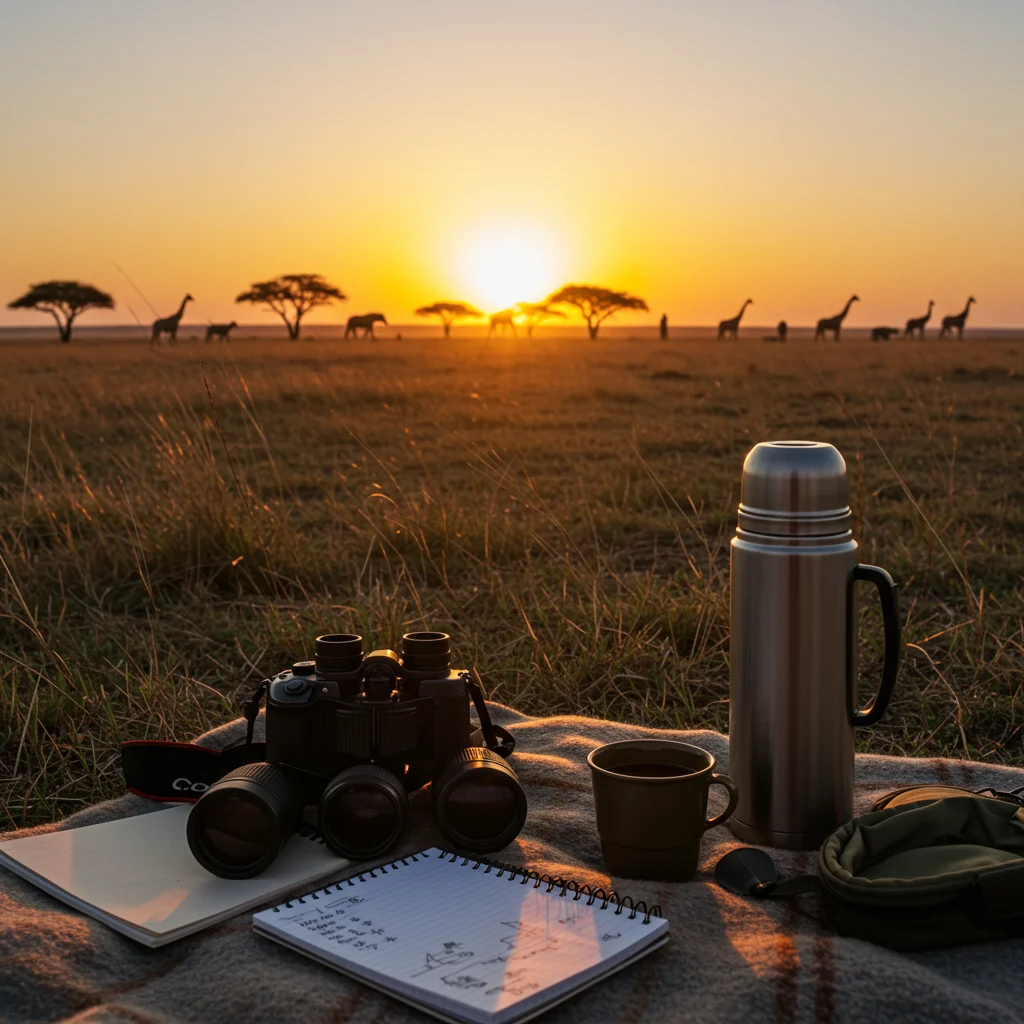
Clothing and Footwear Recommendations
Wear moisture-wicking base layers, an insulating mid-layer, and a windproof, waterproof outer shell. Sturdy hiking boots with good traction are essential for rocky or muddy trails. Warm hats and gloves are recommended, as temperatures can drop quickly after sunset.
Must-Have Wildlife Watching Equipment
Binoculars with good light-gathering capability are invaluable for spotting distant animals. A lightweight backpack, headlamp, and reusable water bottle round out the basics. For those interested in birding, a field guide specific to the Rockies is helpful.
Camera Gear for Capturing Sunset Moments
Low-light photography demands specialized gear. A DSLR or mirrorless camera with a fast lens (f/2.8 or lower) performs best as daylight fades. Tripods provide stability for longer exposures, and extra batteries are a must in cold conditions.
For more detailed advice on gear selection, we invite you to review our recommendations in our guide to top cameras for wildlife photography.
Packing Checklist for Your Adventure
- Layered clothing (base, mid, outer)
- Sturdy, waterproof boots
- Binoculars and field guides
- Camera and tripod
- Headlamp or flashlight
- Extra food and water
- Bear spray and whistle
- First-aid kit
- Map and compass or GPS
Where Are the Best Sunset Wildlife Spots at Moraine Lake?
Several locations around Moraine Lake provide excellent vantage points for sunset wildlife watching. The interplay of light, water, and mountains creates a stunning backdrop for animal activity.
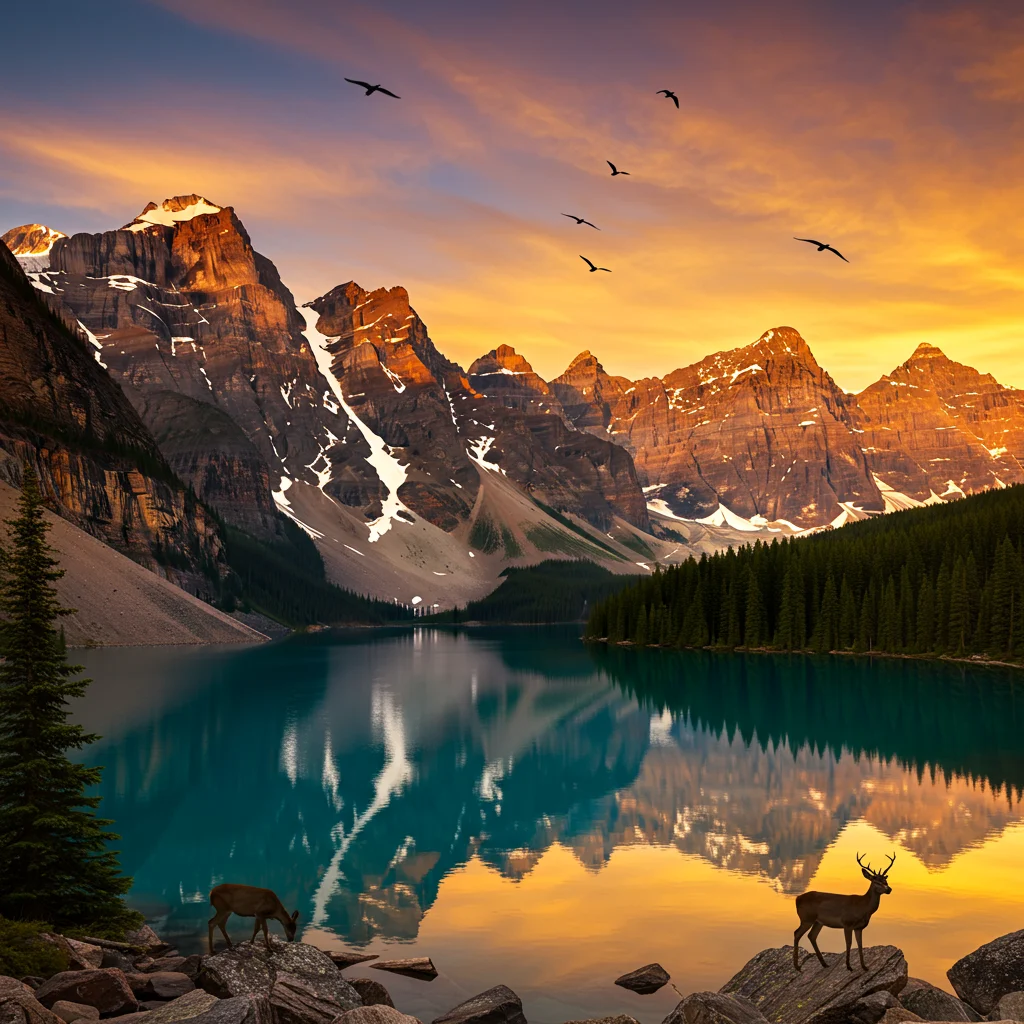
Top Viewing Areas Around Moraine Lake
Popular viewing spots offer broad sightlines and convenient access, while quieter areas provide a more personal experience with nature.
Popular Trails and Lookouts
The Rockpile Trail is renowned for panoramic views of Moraine Lake and the surrounding Valley of the Ten Peaks. The lakeside trail also offers good opportunities to spot beavers, otters, and birds as dusk settles in.
Secluded Spots for a Quiet Experience
For those seeking solitude, the eastern shoreline and nearby forested areas offer peaceful settings where wildlife often appears undisturbed by human presence. Listening to the gentle lap of water and the distant call of loons heightens the sense of immersion in the natural world.
Best Sunset Wildlife Locations at Lake Louise
Lake Louise is equally celebrated for its wildlife diversity, particularly at sunset when the surrounding meadows and forests become active with movement.

Prime Viewing Points Around Lake Louise
The Lakeshore Trail and Fairview Lookout offer unobstructed views of the water and surrounding slopes, where deer and elk often graze in the fading light. The gentle breeze carries the scent of wildflowers and pine, adding to the sensory richness of the experience.
Hidden Gems for Wildlife Encounters
Less-traveled paths, such as the Lake Agnes Trail and the meandering streams south of the lake, provide chances for quiet wildlife encounters. Here, the sounds of rustling leaves and distant animal calls remind us of the wildness that still thrives in these protected areas.
Which Wildlife Can You See at Sunset?
Sunset brings a surge of activity among the region’s mammals and birds. Observers may witness a remarkable variety of species, each adapted to the unique challenges and opportunities of twilight.
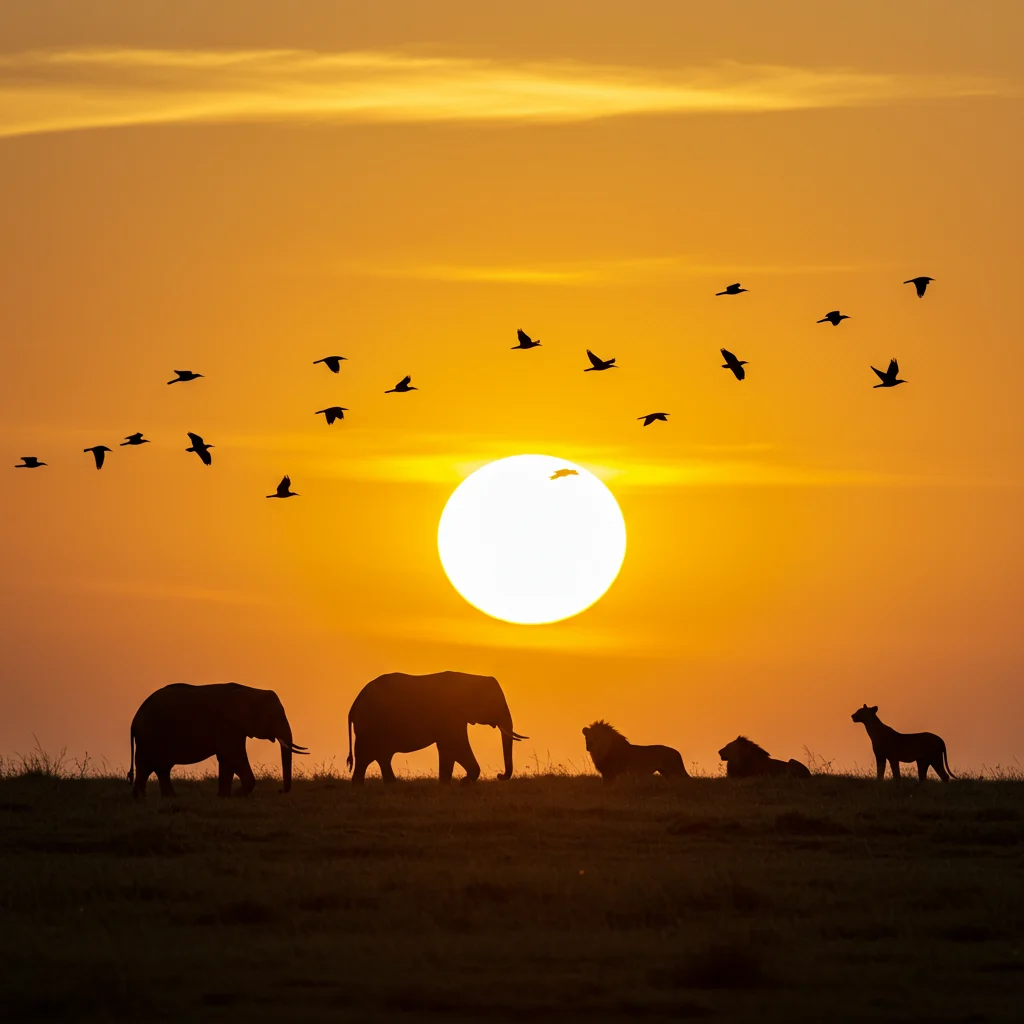
Common Mammals Spotted at Dusk
The forests and meadows around Moraine and Lake Louise are home to some of North America’s most iconic mammals, many of which are most active at dusk.
Grizzly and Black Bears
Both grizzly and black bears forage for food during the cooler evening hours, especially in spring and fall. Watching from a safe distance, visitors can sometimes observe mothers with cubs or solitary bears moving quietly through berry patches.
Elk, Deer, and Moose
Large ungulates such as elk, deer, and moose often appear near lakeshores and open clearings as the sun sets. Their silhouettes against the glowing sky create unforgettable memories.
Wolves, Coyotes, and Foxes
Predators including wolves, coyotes, and foxes become more active at dusk, hunting small mammals or traveling in search of food. Their calls contribute to the wild soundtrack of the evening.
Birdlife and Nocturnal Species
Birdwatchers will find sunset to be a prime time for observing both diurnal and nocturnal species as they transition between day and night activities.
Owls and Raptors
Great horned owls and other raptors begin their nightly hunts at sunset, gliding silently above the treetops. The sight of an owl’s wings catching the last rays of light is truly mesmerizing.
Songbirds and Waterfowl
Songbirds fill the air with their evening choruses, while ducks, geese, and loons settle onto the water. The interplay of birdsong and reflective lake surfaces creates a sense of peace and connection.
Where to Safely Spot Wildlife at Sunset?
Observing wildlife safely requires knowledge of animal behavior, appropriate distances, and respect for natural habitats. Responsible viewing ensures the safety of both visitors and animals.

Safe Distances and Viewing Etiquette
Maintain a minimum distance of 100 meters from bears and at least 30 meters from other large mammals. Use binoculars or a zoom lens to observe without disturbing natural behaviors. Speak quietly, avoid sudden movements, and never approach or feed wildlife.
Wildlife Corridors and Habitats
Wildlife corridors are essential for animal movement between feeding, breeding, and resting areas. Stay on designated trails and avoid blocking these routes. Understanding habitat preferences can increase your chances of sightings while minimizing disturbance.
Tips for Ethical Wildlife Watching
Ethical wildlife watching protects both the animals and the environment, ensuring these experiences remain available for future generations.

How to Minimize Your Impact on Wildlife
Limit group size, keep noise to a minimum, and observe from a distance. Use established trails and avoid trampling vegetation or disturbing nesting sites. Responsible behavior is especially important during sensitive periods such as mating or rearing young.
Leave No Trace Principles
Pack out all garbage, including food scraps and biodegradable waste. Leave natural objects, such as rocks and plants, undisturbed. By following Leave No Trace principles, we help preserve the pristine beauty of Moraine and Lake Louise.
How to Respect Wildlife and Their Habitats
Never attempt to touch, feed, or attract animals. Respect seasonal closures and posted signs that protect critical habitats. As experts often say:
“Wildlife observation is a privilege, not a right. Our responsibility is to leave the wild as we found it, so others may experience its magic.”
Safety Precautions for Sunset Adventures
Safety should always be a priority when venturing out for sunset wildlife watching. Proper preparation and awareness can prevent accidents and ensure a positive experience.
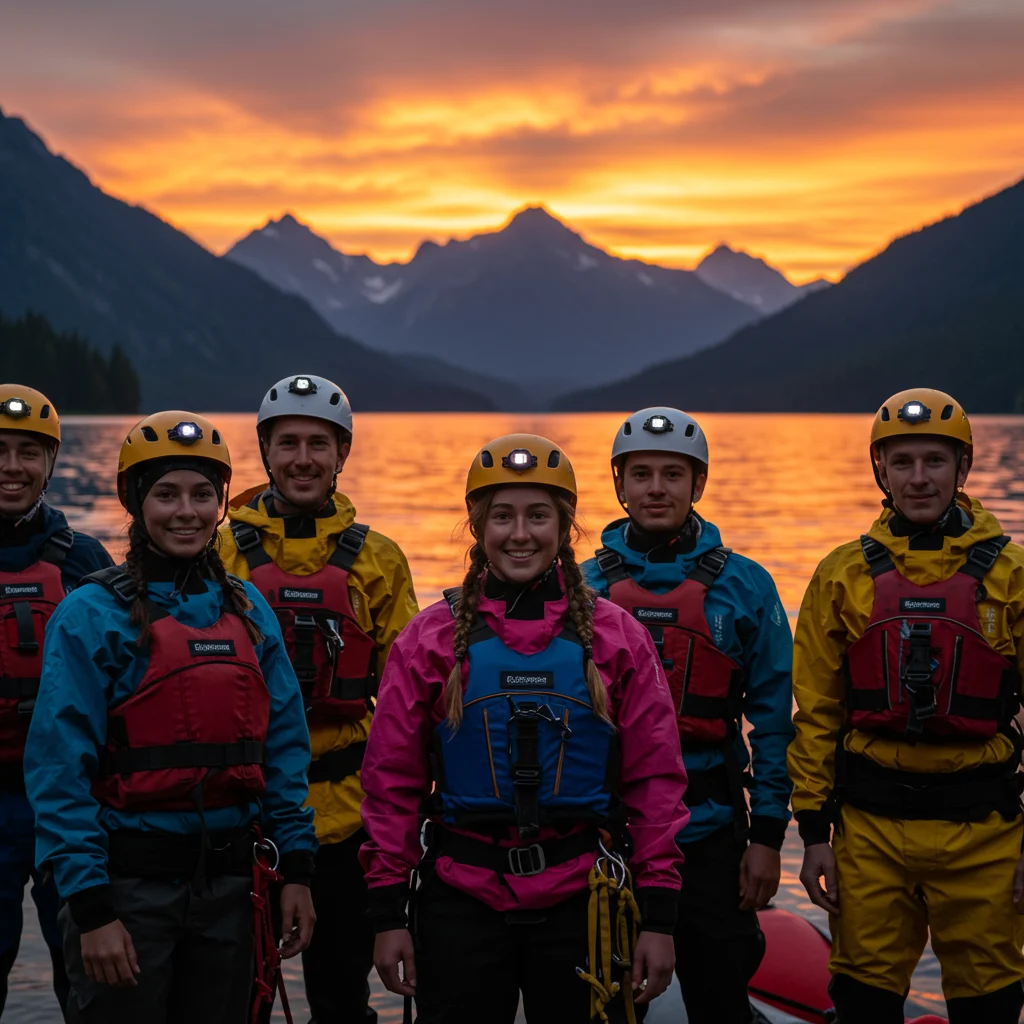
What to Do in Case of a Wildlife Encounter?
If you encounter wildlife at close range, remain calm and avoid sudden movements. Slowly back away and give the animal space to retreat.
Bear Safety Tips
- Carry bear spray and know how to use it.
- Travel in groups and make noise to avoid surprising bears.
- Store food and scented items in bear-proof containers.
Dealing with Other Large Mammals
For elk, moose, or deer, maintain distance and never approach, especially during calving or rutting seasons. If an animal appears agitated, slowly move away and seek shelter if necessary.
Navigating the Trails After Sunset
As darkness falls, navigation becomes more challenging. Familiarity with the trail and proper lighting are essential.
Staying on Marked Paths
Stick to designated trails to reduce the risk of getting lost or disturbing wildlife habitats. Trail markers and reflective signs help guide the way back in low light.
Using Headlamps and Night Gear
Headlamps with red-light modes preserve night vision and minimize disturbance to animals. Carry spare batteries and a backup flashlight for added security.
Are Guided Sunset Wildlife Tours Worth It?
Guided tours offer structure, expertise, and enhanced safety, making them a popular choice for visitors new to the area or wildlife watching in general.
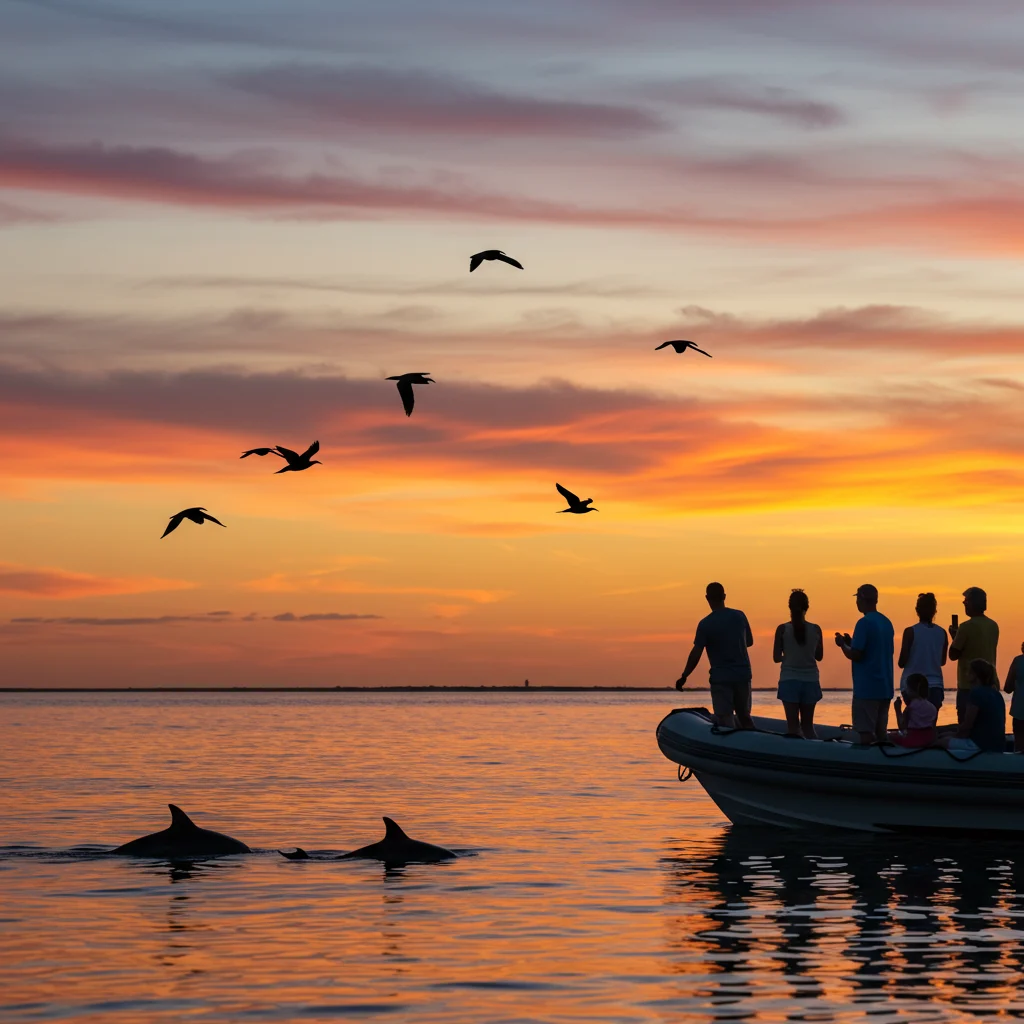
Benefits of Joining a Guided Tour
- Access to local knowledge and expert wildlife trackers
- Smaller group sizes for personalized experiences
- Increased safety in bear country
- Opportunities to learn about animal behavior and ecology
Many visitors find that guided tours provide deeper insights and more reliable sightings than independent outings, similar to the advantages highlighted in our review of guided wildlife experiences in Eravikulam Park.
Top Local Tour Operators
Several reputable companies offer sunset wildlife tours at Moraine and Lake Louise. Look for operators with experienced guides, a strong safety record, and a commitment to ethical wildlife viewing.
How to Choose the Right Tour for You
Consider your group’s size, interests, and experience level. Families may prefer tours with shorter hikes and more interpretive content, while serious photographers might seek specialized outings that focus on rare species or challenging conditions.
Photography Tips for Sunset Wildlife Encounters
Capturing wildlife at sunset presents unique challenges and rewards. With the right techniques, you can preserve the beauty and emotion of these fleeting moments.
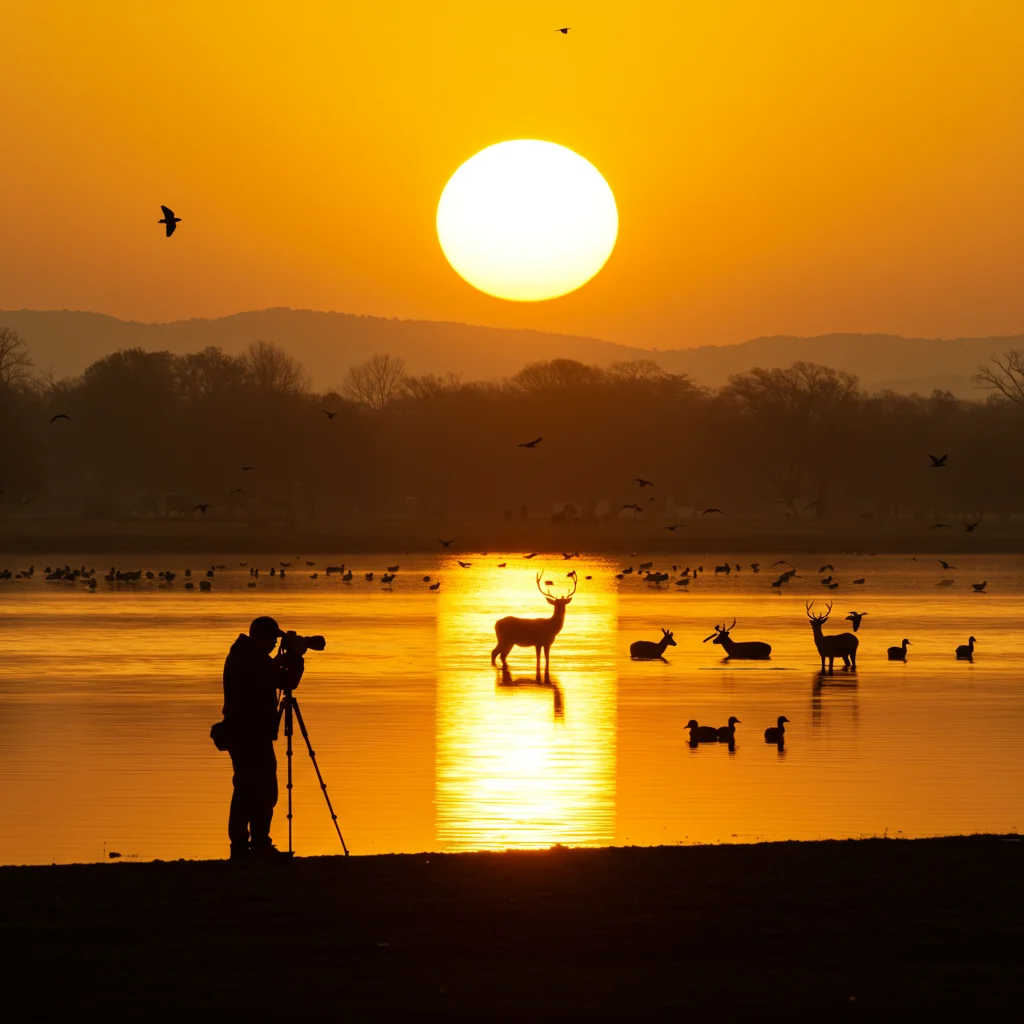
Best Camera Settings for Low Light
Use a wide aperture (low f-stop), high ISO, and slower shutter speeds to maximize light capture. Image stabilization and remote triggers help reduce blur. Shoot in RAW format for greater editing flexibility.
How to Get Close-Up Shots Safely
Telephoto lenses allow for detailed shots without the need to approach animals. Practice patience and wait for natural behaviors rather than attempting to attract wildlife closer. Use natural cover and avoid sudden movements.
Ethical Wildlife Photography Practices
Always prioritize the well-being of animals over getting the perfect shot. Avoid using flash or artificial light, which can startle or disorient wildlife. Respect boundaries and avoid disturbing nests or dens.
Family-Friendly Sunset Wildlife Adventures
Sunset wildlife outings can be memorable and educational experiences for children. With proper planning, families can safely enjoy the wonders of Moraine and Lake Louise together.

Tips for Exploring with Kids
- Choose shorter, well-marked trails suitable for all ages.
- Bring snacks, water, and extra layers to keep children comfortable.
- Engage kids with wildlife identification games and nature journals.
Accessible Trails and Facilities
Both Moraine and Lake Louise offer accessible viewing areas and restrooms. Boardwalks and paved paths accommodate strollers and wheelchairs, ensuring everyone can participate in the adventure. For inspiration on accessible wildlife experiences in other destinations, consider reading about family-friendly wildlife encounters in Nairobi.
How to Make the Most of Your Sunset Visit
Combining wildlife watching with other activities can turn a sunset outing into a full, unforgettable evening. Thoughtful planning ensures a well-rounded experience for all ages and interests.

Combining Wildlife Watching with Other Activities
Pair your wildlife adventure with a scenic hike, a lakeside picnic, or an evening paddle. These combinations create lasting memories and allow for varied perspectives on the landscape.
Picnicking and Dining Options
Pack a picnic to enjoy at designated lakeside areas, or reserve a table at one of the nearby lodges for a post-adventure meal. Remember to store all food securely to avoid attracting wildlife.
Sunset Canoeing and Kayaking
Gliding across the still waters of Moraine or Lake Louise at sunset offers a peaceful vantage point for both scenery and wildlife. Gentle paddling allows you to hear subtle sounds and observe animals along the shoreline.
Stargazing After Sunset
As darkness deepens, the clear mountain air reveals a breathtaking night sky. Bring a star chart or astronomy app to identify constellations, or simply relax and enjoy the brilliance of the Milky Way overhead.
Where to Stay Near Moraine & Lake Louise
Accommodations range from luxurious lakeside hotels to rustic campgrounds, accommodating all preferences and budgets.
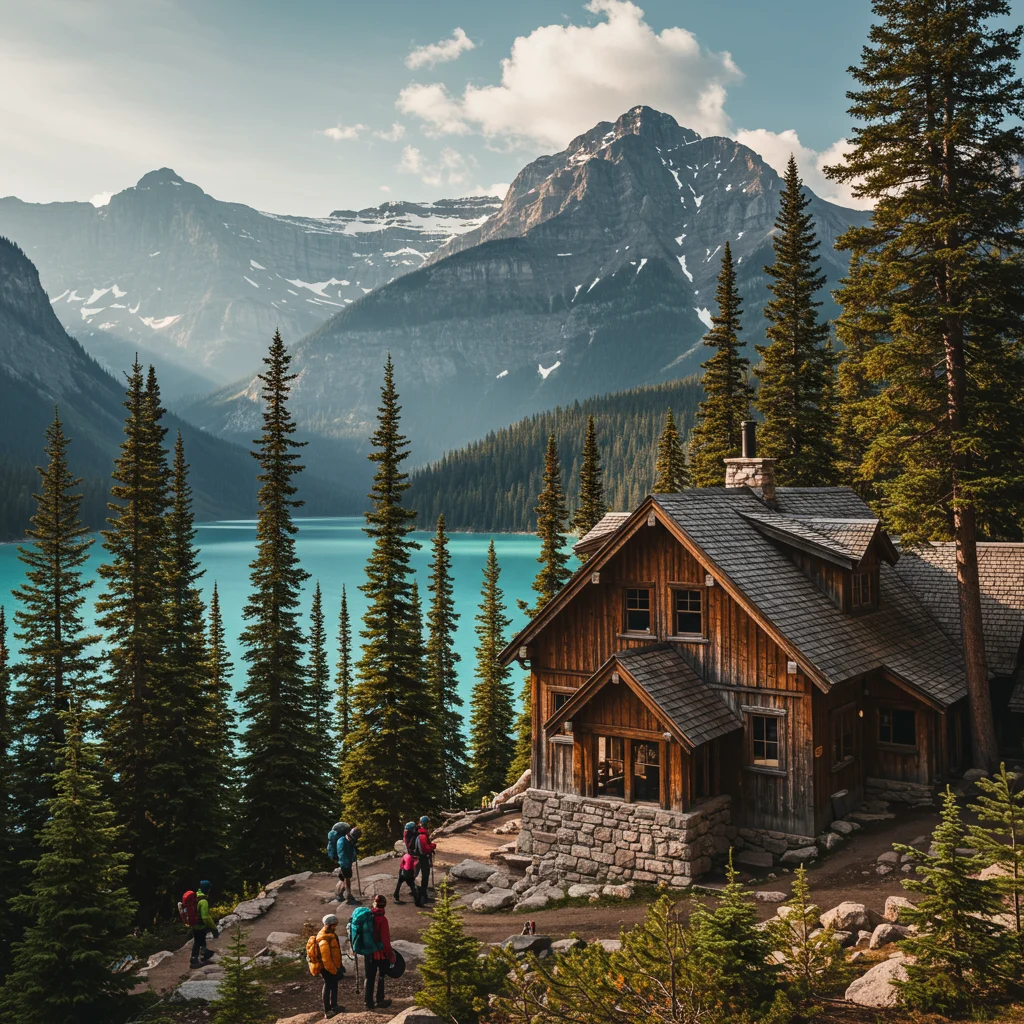
Best Accommodation Options
The historic Fairmont Chateau Lake Louise and Moraine Lake Lodge offer unmatched access to the lakes and their wildlife. Nearby towns such as Lake Louise Village and Field provide additional hotel and B&B options.
Camping and RV Parks
Several campgrounds are located within a short drive of both lakes. Reservations are recommended, especially in peak season. Campers enjoy the unique experience of waking to the sounds of birds and the scent of fresh pine.
Insider Tips from Local Experts
Local guides recommend arriving early to secure parking and choosing weekdays for quieter trails. Bring a thermos of hot tea or cocoa for warmth, and keep your camera ready—the best sightings often happen when least expected.

For those interested in expanding their wildlife adventures to other continents, our article on unique wildlife experiences in Nepal offers further inspiration.
Frequently Asked Questions About Sunset Wildlife Adventures
Q: Is it safe to walk the trails after sunset?
A: With proper gear, group travel, and awareness of your surroundings, evening trail walks are safe. Always stay on marked routes and carry a headlamp.
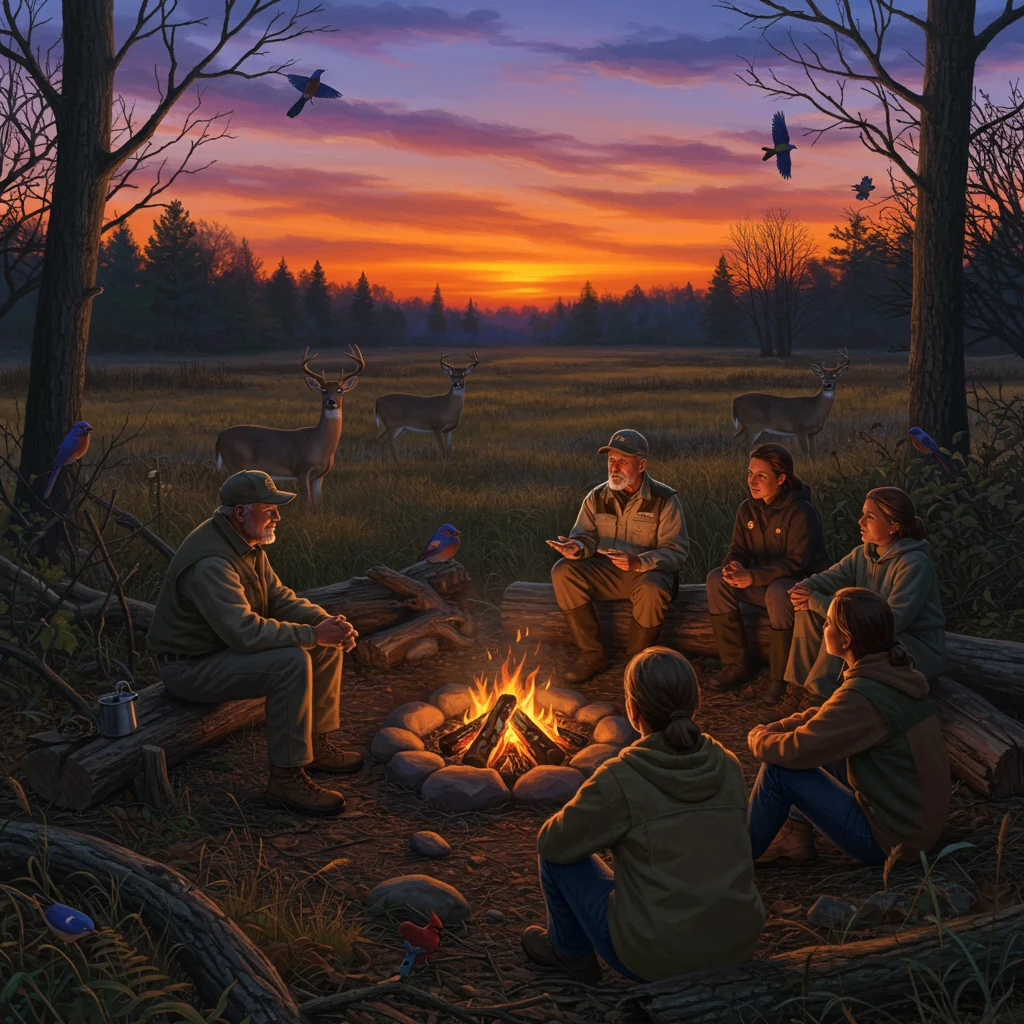
Q: Can I bring my dog on a wildlife watching adventure?
A: Pets are not recommended, as their presence can disturb wildlife and increase safety risks in bear country.
Q: What is the best way to photograph wildlife at dusk?
A: Use a camera with strong low-light performance and a telephoto lens. Remain patient and avoid using flash.
Q: Do I need a permit for wildlife watching?
A: No permit is needed for general wildlife viewing, but parking passes or park entry fees may apply.
Q: Are guided tours suitable for children?
A: Many guided tours are family-friendly; check with operators for age recommendations and accessibility.
How to Book on Viator
Booking your sunset wildlife adventure is simple with Viator. Visit their website to find tours, compare options, and read verified reviews from other travelers. Viator offers a range of excursions, including guided wildlife walks, canoe trips, and photography outings tailored to all interests and abilities.

To plan your trip and book activities, head directly to Viator’s booking platform for the latest schedules and availability.
Conclusion: Creating Unforgettable Sunset Wildlife Memories
Sunset at Moraine and Lake Louise is a time of wonder, where the light transforms the landscape and wildlife emerges in the hush of evening. With the right preparation, respect for nature, and a sense of curiosity, we can enjoy these moments safely and ethically. For more travel ideas and expert guides, visit Izase—your trusted source for unforgettable adventures in wild places.

Disclaimer: This information is accurate to the best of our knowledge; however, there may be changes or mistakes. Please verify exact details on the Viator booking page.


